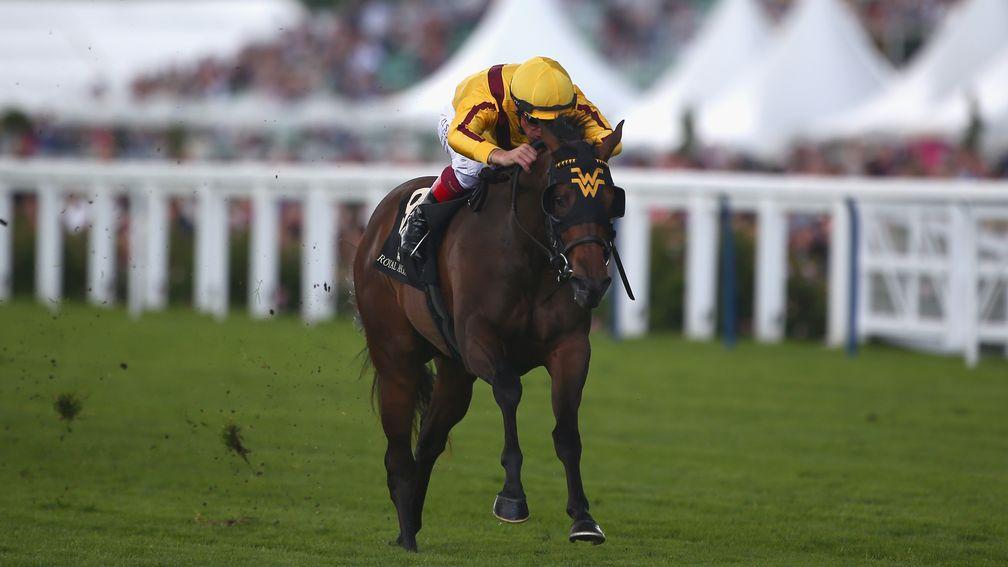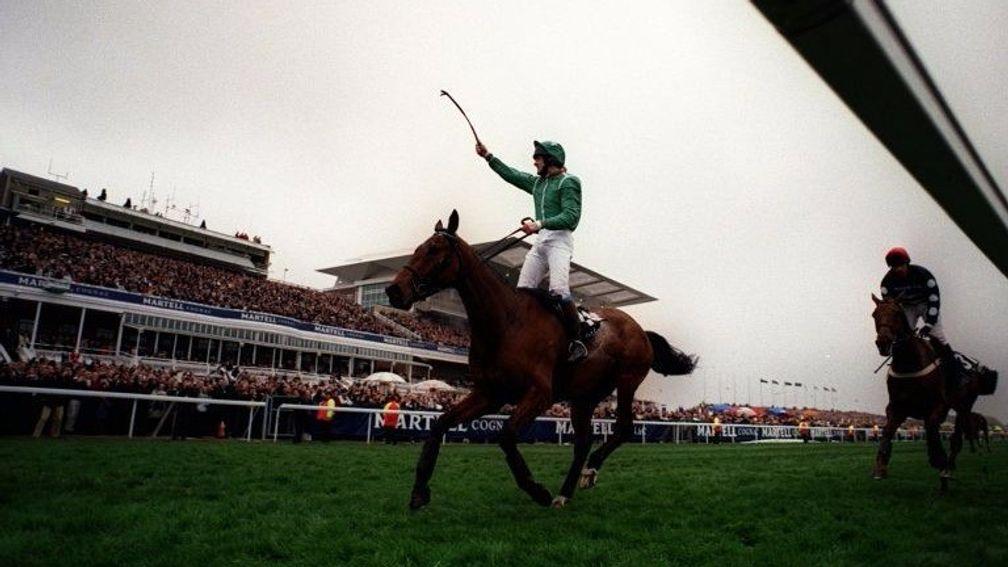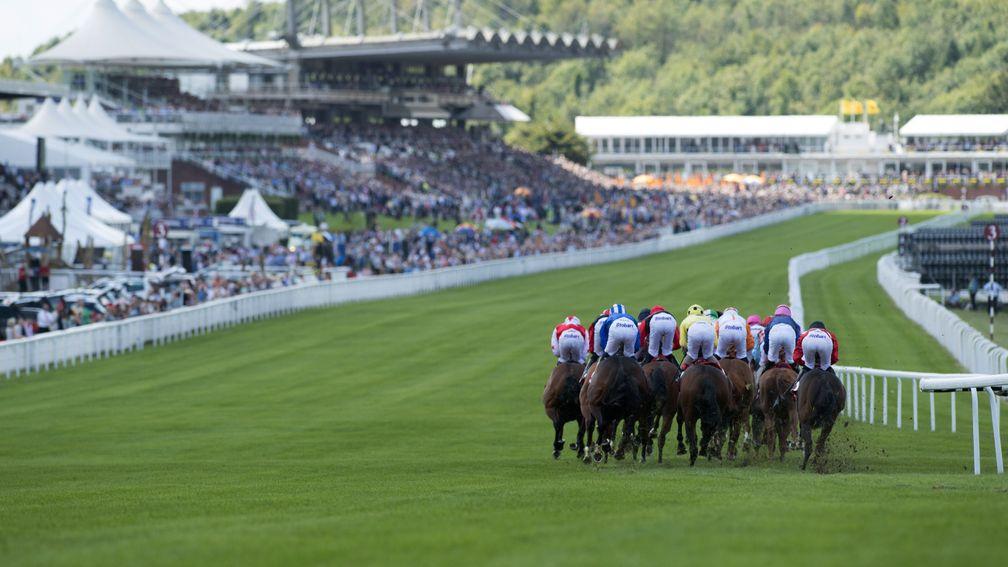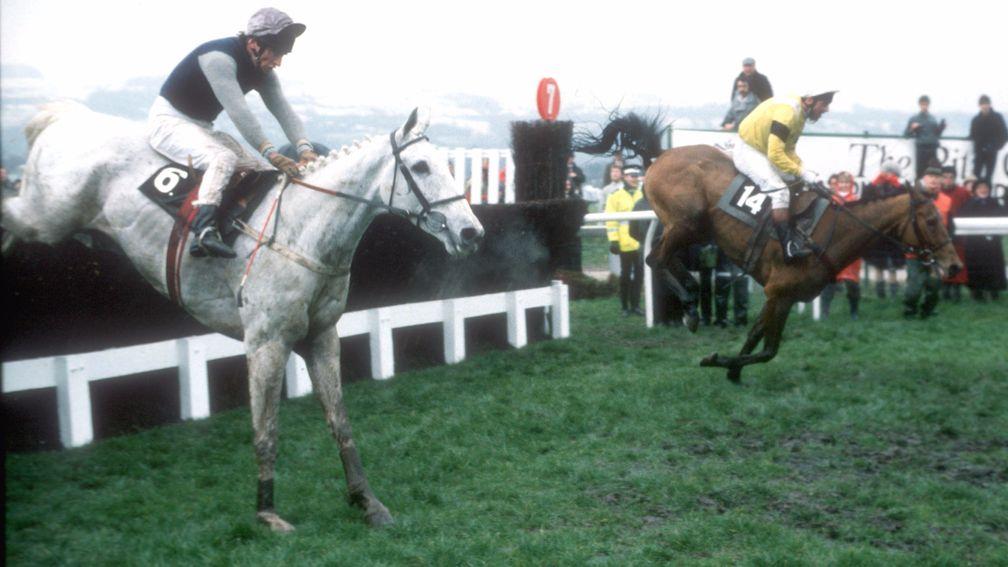Racing Post form experts on the importance of the going for betting

First published on Tuesday, August 9, 2016
As part of special six-part series on the going, top form analysts give their opinions on track biases, watering, and the importance of underfoot conditions when it comes to betting
Graeme RodwayThe Edge
‘Not the most important piece of the puzzle’
I have one golden rule of punting and that is keep it simple. The best horse will usually win and, when assessing handicaps, the best-handicapped horse will usually win.
Ability is the most important factor and I’ll never back anything I don’t think is good enough – even if the ground is in his or her favour.
The best example is Frankel’s victory in the 2012 Qipco Champion Stakes. Sir Henry Cecil’s superstar was considered a far better performer on top of the ground and encountered soft going for the first time since his debut at Ascot. His main rival Cirrus Des Aigles was a prolific winner on testing ground, yet he couldn’t get anywhere near Frankel.
I also remember a huge gamble on Clever Cookie for last year’s King George at Ascot. In hindsight, it is laughable that Peter Niven’s gelding, talented though he is, went off only 4-1 to beat Postponed, simply because the ground had turned in his favour. The going can be a leveller, but not to that extent. Clever Cookie finished well held in fifth.
Those are extreme examples and it’s not to say the ground shouldn’t be taken into consideration when having a bet, but it should be a secondary factor. It is an important piece of the puzzle, especially in tight races, but it is far from the most important piece.
Once I’ve made a calculation about who I believe is the most talented runner in the race (or most talented in relation to their mark if the race is a handicap), the next task is to assess whether I think that horse will act in the prevailing conditions. That is based mainly on form and whether the runner has shown a liking for that particular surface, but if the horse is unproven on the going the pedigree can give pointers. Some sires’ progeny seem to show a preference for certain ground, although that isn’t foolproof and there are many exceptions.
There will also be times when I’m happy to take a chance on a horse who is unproven in the conditions. If a runner has significantly more ability than anything else, yet is pushed out to a bigger price than it should be because of ground concerns, that wouldn’t worry me as the doubt is factored into the odds. Price is everything as a punter, after all.
Gerald DelamereTipster and legendary course walker
‘The most important factor for me’
It was in the mid-1970s that I started checking the ground. I was looking after horses for a good friend, Chris Cronin, who had them in training with Fred Winter. You wanted to know how much the ground had changed overnight.
The going is the most important factor for me, and in all the major handicaps I try to unravel it is crucial. I will study the videos and you can often tell from a horse’s action how it will act when confronted with a new set of conditions. Before Goodwood I was interested to look back at Galileo Gold to see how he might act on faster ground.
Think of how War Front’s progeny have improved on fast ground in recent weeks, and a Galileo colt or filly will often win on soft ground in Ireland – but not when raised in class in Britain.
Unfortunately, I gave up walking the course years ago. But a couple of successful bets stand out when it comes to the importance of the ground. The biggest I had was Nagida in the 1993 Wokingham at Royal Ascot. The meeting began on good to soft, soon became soft and the stands’ rail was spurned all week. By Thursday I could see the stands’ side was drying out. It was suggested to Jason Weaver that he stick to the stands’ rail the following day. Having been short of room two out he switched left to near the rail and scored at 11-1.
Similarly, I thought the good, good to firm ground would be too fast for Papillon in the 2000 Grand National. However, walking the course in the morning rain soon told me otherwise – I was quickly on the mobile to get a decent price about a horse whose SP crashed into 10-1.

James KnightCoral odds compiler
‘It pays to be sceptical of received wisdom’
As someone who sets odds on races and owns a few shares in horses, predicting and assessing the effect of the going is something I do on an almost daily basis. But if there is a talent for accurately predicting going then it is certainly not one that I possess. For example, I recently had to make a choice between Sandown and Leicester for a horse I own a share in – and having studied the forecast I chose Leicester on the basis that good or faster ground seemed almost certain there.
On the eve of the race I returned home to the news that it was now heavy (waterlogged in places) at Leicester and of course, the ground was rattling fast at Sandown.
This wild difference between forecast and the reality is not uncommon. I think one of the main difficulties is weather forecasts are presented as black and white predictions – you see a blue band on the screen and think a band of rain is coming – whereas in actual fact the graphics just represent the probability that it will rain at a certain time and in a certain place. Where we seek black and white, the truth is often random shades of grey.
A similar cognitive bias can occur when we attempt to assess an individual horse’s going preference.
If a horse underperforms on its first run on soft ground, it’s long odds-on the jockey will come back in and blame the ground. And owners and trainers (who obviously want there to be a plausible explanation) are often very quick to accept a going-based theory. So on the basis of very limited evidence, a horse can be pigeon-holed as being a fast or a soft-ground horse, when the reality is it might just have had an off-day the time it ran on the supposedly unsuitable going.
However, jockeys and trainers will have no problem finding other reasons for under-performance when a horse subsequently flops on its ‘favoured’ going. This dogma can affect a horse’s career for literally years. Indeed, I know one set of particularly ‘slow’ owners for whom it took 62 starts (yes, 62) before they realised their ‘fast ground’ horse was just as effective on good to soft (okay, confession time – I was one of them).
This going dogmatism isn’t just restricted to the small guys. Take the mighty Gleneagles last summer. Now, maybe it was the case that he was at his very best on fast ground, but the horse had won an Irish Guineas on good to yielding. Despite this, connections withdrew him in three subsequent Group 1s due to the going, which was good, good to soft and yielding.
Maybe I was the only one shouting ‘Just run the damn horse!’ at my TV screen, but somehow I doubt it.
When it comes to assessing a horse’s going preference either as an owner or as a punter, it pays to be sceptical about any received wisdom that is based on the evidence of just one or two runs. Sometimes doubts are based on no runs at all. Take Librisa Breeze in the recent Gigaset International. He was available at more than double his final SP on the morning of the race and I’m pretty sure that inflated price was down to the fact he was unproven on fast ground (which he had never even tried). Now that he has recorded a career-best on it, maybe connections will avoid the soft in the future.
Richard BirchTipster
‘Watering should not radically alter the going’
Any punter who places a bet without careful consideration of the horse’s going requirements might as well throw the money down a drain.
Unfortunately, the official ground descriptions at some tracks often render it a futile exercise. There have been several instances this year of meetings beginning on ground officially described as good, only for it to become apparent after just one race – on both a visual basis and time interpretation – that rain falling on an over-watered surface has turned conditions soft or heavy.
At some stage during the meeting – often after the first race – the ground will be officially changed, yet for the purposes of the form book that first race will have been staged on ‘good’ ground.
When referring back to that race in the future, the punter will be presented with wholly inaccurate information which is likely to lead to fundamentally wrong decisions being taken.
The form book is supposed to be a bible of accurate information, yet it is full of inaccurate going reports.
Watering should only be allowed to promote grass growth, not to radically alter the going, which happens on a depressingly regular basis at some tracks.
A huge part of the success of the recent big meetings at Newmarket and Goodwood was that they took place on good to firm, summer ground.

I keep and update a list of horses to follow, and about 25 of them produce their best form when the ground is firm. Yet those horses are rarely given the opportunity to enjoy their favoured conditions in midsummer nowadays as clerks of the course often seem intent on producing going as close to good as they can.
It is no real surprise that many of my punting successes over the last few years have come at Bath, a track with no irrigation system, and where the majority of meetings are staged on fast terrain.
The track usually attracts big fields and the same horses return week after week, so regular racing on firm ground clearly doesn’t harm them. As far as I can tell, an overwhelming majority of trainers, jockeys, owners and punters want to see horses race on natural ground, with watering only employed to improve safety.
Sadly, natural ground is a rarity these days.
Pietro InnocenziThe Edge
‘You have to dig deeper’
The going will always be the most important factor when it comes to form study, but that in itself means little as even casual punters nowadays are likely to wearily trot out that line. You have to dig deeper to find an edge when it comes to the ground.
As someone who prefers to back at bigger prices I tend to enjoy the beginning and end-of-season periods – mainly due to the likelihood of easier going, which leads to less obvious results. Even in Britain in the summer months you tend to have dry periods, which is when runners hold their form better. If a horse racks up a string of three or four wins you can almost guarantee the ground will have been decent throughout.
Having said that, one of my best wins this season came about due to a dry spell. Dodgy Bob, who had shown a liking for quick conditions last season, finished well beaten in testing going on his reappearance in April – a performance that could basically be ignored. The bookmakers took it at face value and he was available at 12-1 the night before his following start at Hamilton, despite the ground having swung right in his favour. He won at 9-1 and has since shown little in three starts on slower surfaces. There is a tendency for punters to be interested only when there is a sudden change from fast to soft ground and enough are alive to it that prices don’t last long, whereas I find they are less on the ball when it comes to a Dodgy Bob type scenario. It works equally well that way, albeit with a bigger talent pool to dig into.
Following going changes is obviously important, but knowing the nature of individual tracks is essential, in my view. Few, if any, are completely flat, and water drains away from the highest part to the lowest. That is why on soft ground jockeys head for the stands’ rail in search of better going at Brighton, Epsom and Salisbury. Even at Ascot, which must have more funds available than most tracks when it comes to course management, there was a significant bias in favour of the centre to far side at the royal meeting in June.
And the laws of physics don’t evaporate in dry spells. Hence, despite selective watering and course realignments, you still have the golden highway under the stands’ rail at Lingfield (very much in evidence again at its final meeting in July). There is also what often appears slower ground under the far rails at Salisbury and Thirsk, even when the going is given as good to firm. There are more biases out there – the clerks of the course can tinker only so much – and you should make it your business to find them.
Dave EdwardsTopspeed
‘Time mostly concurs with the official view’
Apart from a horse’s wellbeing the going is the most important aspect governing its performance – but it is also a very subjective issue.
Ask ten people about the ground and you will get five different opinions. Winning connections will be happy with it; those of the beaten favourite will blame the terrain.
Race times provide an impartial assessment of the surface. A few races are needed to provide reliable evidence at any given meeting, but a reasonably accurate assessment can be made halfway through a card. Several years ago I often found the times at odds with official assessments, but the new breed of clerks are savvy, well informed and the going based on time concurs with the official view more often than not. Many clerks go out of their way to provide accurate and reliable reports and monitor race times to back up their assessment.
One area ripe for improvement is when it rains on or before race day as there tends to be a dramatic overreaction to the impact of 10mm or 20mm to the state of the ground. The top inch may be loose but underneath it’s still on the firm side. Good to soft or soft appears in the description when race times suggest otherwise. Royal Ascot this year was a highprofile case in point – race times were indicative of good to soft ground, a view reinforced by Lady Aurelia’s sensational Queen Mary time of 60.14sec. Pegasus would have struggled to clock that on soft ground, which was the official view. That said, such instances are rare. Punters who blame erroneous ground reports are more often than not talking through their pockets.
When the going gets tough
1989 Cheltenham Gold Cup
“Desert Orchid looks as if he’s tiring in the ground. Yahoo, who loves the mud, is full of running.” Thus Sir Peter O’Sullevan set the scene for the climax to a race that serves as the epitome of class and courage in the face of adversity. Conditions were desperate after incessant rain, with standing water on the track for the Triumph won by mudloving 66-1 shot Ikdam. How heavy was the ground that March day? Desert Orchid recorded the slowest winning time in the last 40 Gold Cups.

2001 Grand National
Winning jockey Richard Guest said he had never raced on worse ground. Survivors were whittled down by a series of tragicomic incidents on the second circuit, leaving Guest and Red Marauder to lead home Timmy Murphy on Smarty in probably the most gruelling race of all time. Alastair Down thundered: “This wasn’t a great race, it was an entirely predictable unfolding of accident and agony."
2011 Eider Chase
Twelve horses started, three finished and all were exhausted. Companero and Giles Cross were the only two to handle the conditions even vaguely and that pair virtually climbed the final fence. The BHA conducted a review into why the runners had finished like they did, and James Armstrong, clerk of the course at Newcastle, said: “It didn’t look good but everyone who took part knew what it would be like.”
2012 Irish Derby
On going described as soft to heavy, Guineas and Epsom Derby hero Camelot wandered around in the straight as Joseph O’Brien tried to nurse him home, finishing in a time five seconds slower than any other of the last 29 winners of the race. The Irish racing public were the grateful recipients of a sporting decision to run on ground Joseph said the colt “absolutely hated”. Camelot would win only once more.
2015 West Wales National
Sir Anthony McCoy famously said “There’s heavy and then there’s Ffos Las heavy”, and no race has better showcased this than last year’s West Wales National, which ended in farcical circumstances. Bob Ford seemed to be the only one of the ten who started to make it around in bottomless conditions. However, Gorgehous Lliege also completed – having been allowed to stop, regain his breath and jump the final fence in his own time.
Scott Burton
If you are interested in this, you should read:
Alastair Down with an introduction to one of the sport’s most crucial aspects
Steve Dennis speaks to Sandown clerk Andrew Cooper about his role
Peter Scargill on the factors influencing a horse’s going preference
Julian Muscat asks if racing’s move away from fast ground has softened the breed
Everything you ever wanted to know about the GoingStick
Members can read the latest exclusive interviews, news analysis and comment available from 6pm daily on racingpost.com
Published on 25 August 2017inRP Classics
Last updated 20:36, 26 September 2017